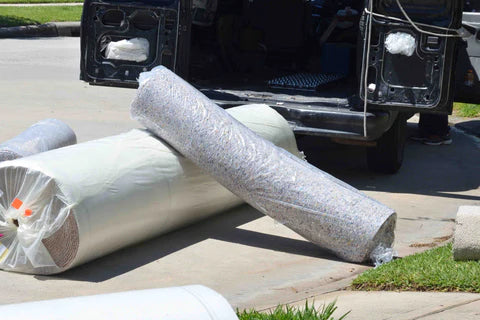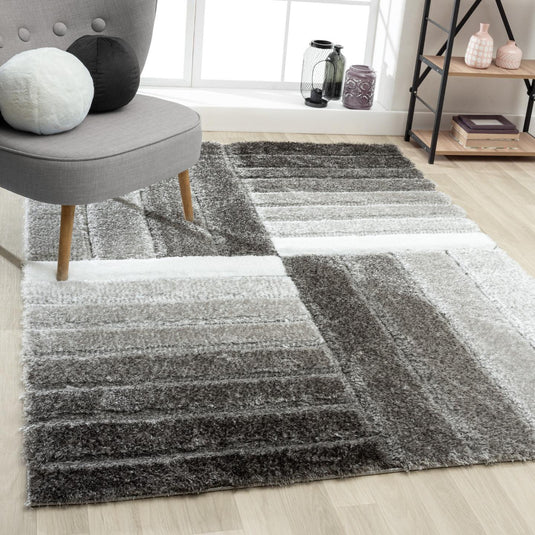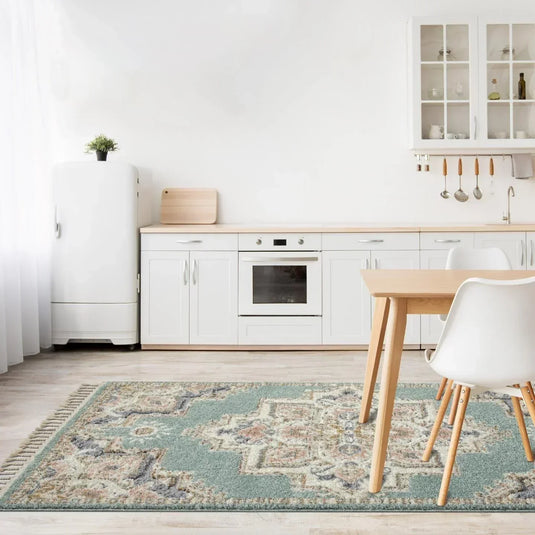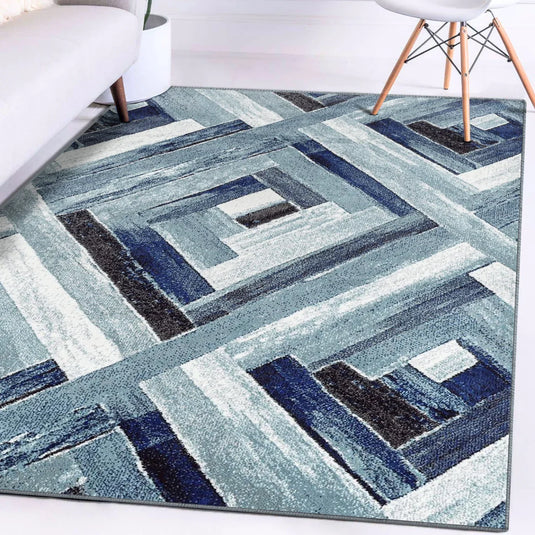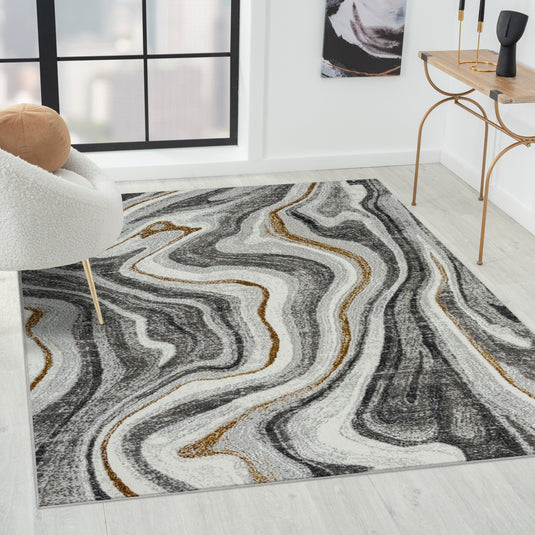Area rug pads have been popular floor protectors in many homes for decades. But their original function has always been a topic of debate among homeowners. The concept of using a pad beneath an area rug to provide more cushioning and protection for floors dates back to the early 20th century. Before now, they were made from materials such as jute, felt, and even rubber. But with the advent of modern technology and synthetic materials, rug pads have evolved significantly.
Today, they are available in a wide range of materials, sizes, and thicknesses, each claiming to offer specific benefits such as improved grip, extra cushioning, and extended rug life span. Nonetheless, many people still wonder whether rug pads are truly necessary, or if they are simply a marketing ploy to sell more products.
In this article, we examine the benefits of rug pads and explore whether or not they are truly worth the investment.

Why are Rug Pads Important?
1. Rug pads increase the lifespan of your Area Rug
Acting as an extended buffer between your rug and the floor, a rug pad prevents the fibers of your area rug from being crushed and prolongs their life span. With every step you take, the pressure from your feet can cause the dirt particles to rip the fabric in your rug. This drastically reduces its lifespan. However, Rug pads add an extra layer of protection. It preserves the pile of your rug and helps it spring back more quickly. These pads absorb all the impact of furniture and daily foot traffic.
2. Rug pads protect your floors and encourage neatness
Because a rug pad serves as another layer under your Area Rug, it prevents scratching on hardwood floors. It also prevents dye transfer to the carpet below your rug. Having a rug pad under your area rug means that mildew, mold, and odors will not set in. Rug pads avert the occurrence of these three things by allowing more air circulation and stopping bacteria growth under your rug.
3. Rug pads prevent slipping
Rug pads hold and anchor your Area Rug safely in place. They are the best way to avert the chances of slipping on rugs. Rug pads also keep your rug from curling or developing wrinkles, which can be safety hazards for slips, trips, and falls. You should invest in a non-slip rug pad as it is suitable for your mental and physical comfort. Rug pads are especially important when you have children or older adults in the house. Besides being an added safety, they hold your area rug in place during vacuuming and when moving furniture.
4. Rug pads help reduce noise effectively
Area Rugs do an excellent job reducing noise on their own. However, padding can enhance their ability to dampen sound. When you have many people tramping through any space, getting the right floor coverings can help minimize the amount of noise generated around the home. This is particularly useful if you have an upstairs room or a basement that you frequent. Keep in mind that some pads are better at reducing noise than others. Thicker pads tend to absorb sound more effectively. But your best bet is to look for a pad type that has a high Noise Reduction Coefficient (NRC).
5. Rug pads enhance the feel of your rug
Rug pads offer a long list of subtle benefits. For instance, after installing any of Luxe Weavers' Abstract Area Rugs, you will observe how much foot comfort it provides when it has a pad underneath. A padded rug can absorb the impact of your footsteps and can give it a much softer feel. In addition to dampening noise, they also add a bit of cushion and softness.

Different Types of Area Rug Pads
There are 7 types of rug pads available. Consider their features to pick the best one for you.
1. Felt Rug Pads
Felt rug pads are commonly made from a blend of recycled natural and synthetic fibers, resulting in a thick and comfortable pad at a reasonable cost. These fibers, which can include wool, cotton, polyester, nylon, and more, are visible in the pad's grayish, woven appearance.
Although felt rug pads are a popular choice, they may cause slipping on hardwood or tile surfaces, especially with small rugs. In such instances, a hybrid felt/natural rubber pad is a more suitable option.
2. Natural Rubber Rug Pads
Natural rubber is one of the most frequently used rug pad materials, along with felt. These mats have a waffle or mesh-like texture and come in a beige or whitish color. Made from sap extracted from rubber trees, natural rubber rug pads are natural and don't emit any harmful chemicals.
They provide excellent anti-slip properties, making them suitable for small rugs and door mats on slippery flooring. They also have moisture resistance, making them ideal for bathrooms and damp areas. These rug pads are usually thin, starting at about 1/10 inch, so they're a good option for low-profile needs.
3. Hybrid Rug Pads
A common type of rug pad is the hybrid pad made from a combination of felt and natural rubber. This pad has a thin rubber layer on the bottom for anti-slip properties, and a thicker felt layer on top for cushioning. This type of pad is a good option for any size rug on a hard floor. To ensure quality, make sure the bottom layer is made of genuine rubber, not latex or polyurethane, which may leave a residue.
4. Latex Rug Pads
Latex is a synthetic rubber commonly used for budget rug pads. It offers similar benefits to rubber such as good traction and cushioning, but may contain filler materials like clay which can cause sticky residue on the floor. Despite this, latex pads are resistant to water, making them suitable for damp areas like kitchens, bathrooms, and outdoor spaces.
5. PVC Rug Pads
PVC (polyvinyl chloride) rug pads save costs and are often made from recycled PVC plastics. They have a mesh-like appearance similar to rubber and latex. When choosing a PVC pad, opt for the densest material possible as some types can deteriorate quickly with use. Keep in mind that PVC can release VOCs which may have health risks for you and your household. However, PVC rug pads can be ideal for outdoor areas such as patios or poolside rugs.
6. Memory Foam Rug Pads
Memory foam is a synthetic foam material with exceptional cushioning and resilience. It's the same material that has become popular in mattresses and pillows. As a rug pad, it provides excellent cushioning, reduces noise, and offers thermal insulation, with a long lifespan.
However, it may move on smooth, polished floors unless you select a non-slip-coated version. Unlike PVC and other synthetic foams, a memory foam pad has minimal risk of outgassing or staining hardwood floors. Hence, it’s one of the best rug pads for hardwood floors and is available in thicknesses from 1/4 to 1/2 inch.
7. Polyester Rug Pads
A polyester rug pad is a good option for high moisture areas and for places where pet stains are likely, as well as outdoor locations. It appears as a thin felt-like pad with visible fibers. Note that as a synthetic floor pad, it's made of petroleum-derived chemicals that may affect polyurethane floor coatings.
If you're placing an area rug over a carpet, use a nonslip rug pad specifically designed for that purpose. These pads are made of polyester with a vinyl coating and help prevent the rug from bunching on the carpet below.

How to Use an Area Rug Pad
Rug pads come with finished edges or can be trimmed to size. If you opt for a trimmable option, purchase one slightly larger than your rug so you can tailor it to fit your room and area rug. The nonslip rug pad must be fully hidden under your rug and should be 1 to 2 inches smaller on all edges or around the circumference in case of rounds or ovals. To trim the pad, mark cuts with a felt-tip marker and use sharp, heavy-duty scissors.
Ensure the rug and pad won't bunch up or block doorways when using the pad under a doormat or near swinging doors in a bathroom. Test the rug and pad loft together before cutting or customizing.
Households with pets and children may experience more spills and accidents, so clean them up promptly. Felt pads may require extra blotting and spot treatment, while rubber memory foam pads are water-resistant and can be wiped clean.
The cleaning frequency depends on foot traffic and solid material pads like felt and memory foam can be vacuumed every 1 to 2 years. Non-solid pads can be shaken out. Clean the floor under the rug and pad at least annually, just as you would clean the floor surface.
Factors to Consider When Choosing a Rug Pad For Your Area Rug
Choosing the right rug pad for your area rug can greatly impact its performance and longevity. Here are some of the key factors you should consider when selecting a rug pad for an area rug:
1. Material
Rug pads are made from a variety of materials, including rubber, felt, foam, and PVC. Each material has its unique properties, so it is important to choose one that matches your specific needs. For example, if you need extra cushioning, a foam rug pad may be a good choice. If you are looking for an improved grip, a rubber rug pad or rug gripper may be a better option.
2. Thickness
The thickness of a rug pad can greatly impact its performance. Thicker pads provide more cushioning, while thinner pads are better suited for low-pile rugs. When choosing a rug pad, consider the thickness of your rug, as well as the type of flooring it will be placed on, especially if it's rug pads for hardwood floors, to determine the right thickness for your needs.
3. Size
It is important to select a rug pad that is the same size, or slightly smaller, than your rug. A rug pad that is too small will not provide adequate support and protection, while a pad that is too large may cause the rug to bunch or slip.
4. Flooring Type
Different flooring types, such as hardwood, tile, and carpet, have different requirements when it comes to rug pads. For example, a rug pad with a non-slip backing may be necessary for hardwood floors, while a thicker foam pad may be best for carpeting.
5. Durability
Rug pads are designed to provide support and protection for your rug, but they also need to be durable enough to withstand daily wear and tear. When choosing a rug pad, look for one that is made from high-quality materials and has a solid construction to ensure that it will last for many years.
6. Price
Rug pads come in a range of prices, so it is important to choose one that fits your budget while still offering the benefits you need. Keep in mind that a high-quality rug pad can be a worthwhile investment that will extend the life of your rug and protect your flooring.
By considering these factors when selecting a rug pad for an area rug, you can be sure to choose one that will provide the support and protection your rug needs to last for many years.
Buying and Replacing Area Rug Pad
Rug pads are indeed very useful and offer a variety of benefits for both rugs and flooring. By providing cushioning and support, rug pads can extend the life of your rug and protect your flooring from wear and tear. They also improve safety by preventing slipping and bunching, particularly with a nonslip rug pad, and can enhance the overall appearance and comfort of your rug.
With a range of materials, thicknesses, and prices available, there is a rug pad that is perfect for every area rug and flooring type. Whether you are buying a new rug pad or replacing an old one, the investment is well worth it in terms of the benefits it provides. So, if you want to protect your rug and flooring, and enhance the overall look and feel of your space, consider investing in a high-quality rug pad.
